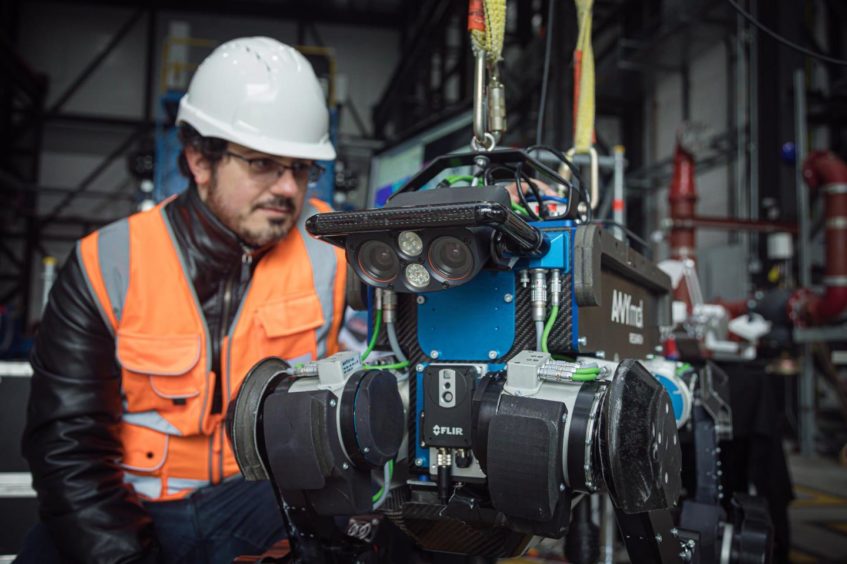
The Offshore Renewable Energy (ORE) Catapult and the National Robotarium have partnered up to deliver a project aimed at scaling and commercialising offshore robotics.
Aberdeen’s Net Zero Technology Centre said the two institutions would link up to deliver the Offshore Low Touch Energy Robotics and Autonomous Systems (OLTER) project as part of its technology transition programme.
As robotics and autonomous systems (RAS) technologies become smarter and more versatile, there is huge potential in deploying them to support offshore operations, particularly in inspection and maintenance.
The OLTER project intends to provide the test bed to develop RAS concepts and products, including airborne drones that can operate beyond visual line of sight (BVLOS), ground robots and autonomous underwater vessels.
Project organisers said their aim is to galvanise industry support to enable the development of RAS in “a more co-ordinated and integrated way” across multiple industry sectors and ultimately establish an RAS centre of excellence in the UK.
This 36-month OLTER project consists of two phases, running from December 2021 to November and later from this December until late 2024.
They will focus on developing industry best practice in robotic vehicle design, operation and communication, while a “data hub” will help develop an architecture for collecting RAS data and expanding machine learning.
Further work will include the establishment of an industrial centre with physical testing and services. NZTC confirmed the centre would be sited in Scotland, though said a location has not yet been finalised.
£4.5 million has been allocated for the project from the £16.5m Scottish Government Energy Transition Fund awarded to the NZTC to accelerate projects that can help deliver Scotland’s net-zero economy. This will be match-funded to £9.6m by contributions from industry.
The Edinburgh-based National Robotarium also noted that the scheme would help progress research and technology developed by the existing Offshore Robotics for Certification of Assets (ORCA) Hub.
Its chief executive, Stewart Miller, said the new project would use the group’s facilities for joint working, experimentation, testing and validation.
Myrtle Dawes, solution centre director at the NZTC described OLTER as “a significant opportunity” to build confidence and trust within industry for RAS technology and increase its adoption.
“We are delighted to have agreed the consortium partners for the project which, with the support of industry, will play an important role in successfully driving the roll out of RAS technologies within the energy sector. NZTC has invested significant amounts in air, land and sea robotic projects to date and we are looking forward to further enabling their adoption in an industrial setting,” she added.
ORE Catapult project development manager Dan Sumner added: “As we continue to work towards achieving net zero, it is clear that robotics and autonomous systems will be a vital enabler. Cutting-edge research and development into robotic technologies for the energy sector is already taking place, right here in the UK.
“We are building a position as a pioneer and expert in this field and the OLTER project will help us to further hone our world-leading expertise. The opportunity this presents for Scotland and the UK is significant – across the supply chain we can create jobs, upskill our energy workforce, build export potential and add value to our economy.”
Recommended for you
